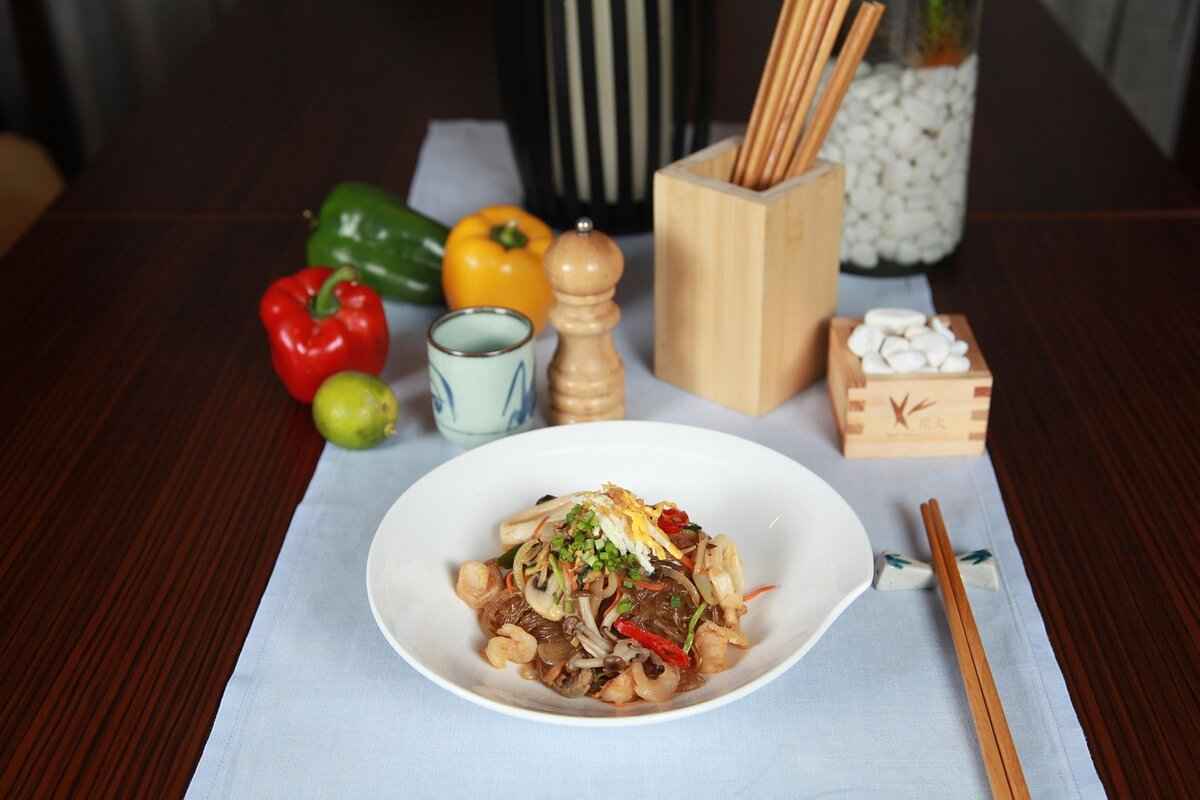The Noche Buena is a cherished Filipino tradition, celebrated on Christmas Eve with a lavish feast that unites families and friends. This vibrant gathering is filled with love, laughter, and an abundance of food, reflecting the rich cultural heritage of the Philippines. In this article, we delve into the essential dishes, customs, and the significance of this festive event that marks the joy of the Christmas season.
Noche Buena is renowned for its wide array of traditional dishes that tantalize the taste buds. From savory to sweet, these foods showcase the diversity of Filipino cuisine. Common dishes include:
- Lechon – The star of the table, a whole roasted pig.
- Pancit – Stir-fried noodles symbolizing long life.
- Lumpiang Shanghai – Crispy spring rolls filled with meat and vegetables.
- Hamón – Sweet, glazed ham that adds a festive touch.
- Queso de Bola – Edam cheese, often served with ham.
Lechon is often considered the centerpiece of the Noche Buena feast. Its crispy skin and tender meat symbolize celebration and abundance in Filipino culture. The preparation of lechon is an art form, involving marinating the pig with a blend of spices and slow-roasting it over charcoal, resulting in an iconic flavor and texture that is irresistible.
Common marinades for lechon include a mix of spices, soy sauce, and calamansi juice, while traditional stuffings often feature herbs, vegetables, and rice. These ingredients enhance the flavor profile and make each regional variant unique.
Beyond lechon, the Noche Buena table features an array of dishes that cater to various tastes, ensuring that everyone leaves satisfied. Popular side dishes include:
- Pancit Canton – A noodle dish that represents prosperity.
- Arroz Valenciana – A flavorful rice dish with chicken and sausages.
- Chopsuey – A vegetable stir-fry that adds a healthy touch.
Desserts are an essential part of Noche Buena, with sweet treats like bibingka (rice cake) and puto bumbong (purple rice cake) symbolizing good fortune and sweetness in the coming year. These delicacies are often enjoyed after the main meal, providing a delightful conclusion to the feast.
Beverages also play a crucial role in the Noche Buena experience. Traditional drinks like salabat (ginger tea) and sago’t gulaman (tapioca and jelly drink) are popular, offering refreshing contrasts to the rich flavors of the food. Additionally, local beers and Filipino wines bring a festive spirit to the table.
Noche Buena is more than just a meal; it embodies Filipino values of family, generosity, and gratitude. Gathering around the table strengthens family ties, allowing members to reconnect and celebrate their shared heritage and traditions. Many families begin their Noche Buena with a prayer, reflecting on the significance of Christmas and the importance of love and togetherness in their lives.
In conclusion, the Noche Buena feast is a beautiful representation of Filipino culture, filled with delicious food and cherished traditions. It is a time for families to come together, share stories, and create lasting memories, making it one of the most anticipated events of the year.

What Traditional Dishes Can You Expect at Noche Buena?
The Noche Buena is a beloved Filipino tradition that brings families together on Christmas Eve. This festive gathering is not just about the celebration; it’s a culinary journey that showcases the rich and diverse heritage of Filipino cuisine. The table is laden with an array of traditional dishes, each carrying its own significance and flavor. In this article, we will explore the various dishes that make up the Noche Buena feast, highlighting their importance and the joy they bring to the celebration.
Noche Buena is known for its wide array of traditional dishes. From savory to sweet, these foods reflect the rich culinary heritage of the Philippines. Here are some of the must-have dishes:
- Lechon: The star of the show, lechon is a whole roasted pig, known for its crispy skin and succulent meat. It symbolizes abundance and is often the centerpiece of the feast.
- Pancit: This noodle dish comes in various forms, such as Pancit Canton and Pancit Malabon. It represents long life and is a staple during celebrations.
- Lumpiang Shanghai: These are Filipino spring rolls filled with minced pork and vegetables, deep-fried to golden perfection. They are a crowd favorite and often served as appetizers.
- Hamón: A sweet, glazed ham that adds a festive touch to the table. It is often served with a side of pineapple or a sweet sauce.
- Rice: A fundamental component of any Filipino meal. It serves as the perfect accompaniment to the rich flavors of the other dishes.
Desserts play a vital role in the Noche Buena feast, symbolizing sweetness and good fortune for the coming year. Here are some popular desserts:
- Bibingka: A rice cake traditionally cooked in clay pots, often topped with salted egg and cheese, providing a delightful contrast of flavors.
- Puto Bumbong: A purple rice cake steamed in bamboo tubes, usually served with grated coconut and butter, offering a unique taste experience.
- Leche Flan: A creamy caramel custard that adds richness to the dessert spread, often enjoyed by all ages.
Beverages are essential to complement the feast, enhancing the overall dining experience. Common drinks include:
- Salabat: A warm ginger tea that aids digestion and provides a comforting touch during the meal.
- Sago’t Gulaman: A refreshing drink made with tapioca pearls and jelly, perfect for balancing the richness of the food.
- Local Wines and Beers: These beverages add a festive spirit to the gathering, making every toast special.
The array of dishes served during Noche Buena is a reflection of Filipino culture, emphasizing family, generosity, and gratitude. Each dish tells a story, representing the diverse influences that have shaped Filipino cuisine over the years. From the Spanish influence seen in lechon and hamón to the Chinese influence in pancit, the Noche Buena table is a melting pot of flavors and traditions.
As families gather around the table, sharing these traditional dishes strengthens their bonds and allows them to celebrate their heritage. The Noche Buena feast is not just a meal; it’s a celebration of love, unity, and the joy of togetherness.

Why Is Lechon the Star of the Table?
The Noche Buena feast is a vibrant celebration of Filipino culture, showcasing a variety of traditional dishes. Among these, lechon, or roasted pig, stands out as the undeniable star of the table. Its presence is synonymous with festivity and abundance, making it a cherished centerpiece during Christmas gatherings.
Lechon is not just a dish; it is a symbol of celebration and community. The sight of a perfectly roasted pig, with its crispy skin and succulent meat, evokes a sense of joy and togetherness. In Filipino culture, this dish represents prosperity and is often reserved for special occasions, making it a fitting highlight for the Noche Buena feast.
The preparation of lechon is an art form that requires skill and patience. It begins with selecting a whole pig, which is then marinated with a blend of spices, soy sauce, and calamansi juice. This marinade infuses the meat with flavor, while the skin is seasoned to achieve that coveted crunch. The pig is then slow-roasted over charcoal for several hours, allowing the fat to render and the skin to crisp up beautifully. This method produces a dish that is both delicious and visually stunning.
Marinades play a crucial role in enhancing the flavor of lechon. Common ingredients include:
- Garlic
- Onion
- Black pepper
- Bay leaves
Additionally, traditional stuffings often include a mix of herbs, vegetables, and sometimes even rice, which not only add flavor but also help to keep the meat moist during cooking.
Different regions in the Philippines boast their unique takes on lechon. For instance, Cebu lechon is famous for its sweet and tangy flavor profile, often attributed to its use of local spices and herbs. In contrast, Batangas lechon is known for its spiciness, incorporating chili into the marinade. These regional variations add diversity to the Noche Buena feast and reflect the rich culinary heritage of the Philippines.
Lechon is typically served with a variety of dipping sauces that complement its rich flavors. Popular options include:
- Liver sauce – A sweet and savory sauce that pairs wonderfully with the crispy skin.
- Vinegar – A tangy option that cuts through the richness of the meat.
These accompaniments not only enhance the dining experience but also showcase the Filipino love for bold flavors.
No Noche Buena table is complete without an array of other traditional dishes. From pancit (noodles) to lumpiang shanghai (spring rolls), each dish carries its significance and adds to the overall feast. Desserts, such as bibingka and puto bumbong, are also essential, symbolizing sweetness and good fortune for the coming year.
Beverages play a vital role in enhancing the Noche Buena experience. Traditional drinks like salabat (ginger tea) and sago’t gulaman (tapioca and jelly drink) are popular choices, providing refreshing contrasts to the rich food. Local beers and Filipino wines often accompany the meal, adding to the celebratory atmosphere.
In summary, lechon is the star of the Noche Buena feast not just for its taste but for its cultural significance. It embodies the spirit of Filipino hospitality and the joy of gathering with loved ones. Its preparation, variations, and the accompaniments that enhance it all contribute to making lechon a beloved centerpiece of this festive tradition.
How Is Lechon Prepared?
The preparation of lechon is a culinary art that embodies the essence of Filipino celebration. This iconic dish, often the centerpiece of festive gatherings, particularly during Noche Buena, is renowned for its mouthwatering flavor and crispy skin. The process of preparing lechon is meticulous and requires careful attention to detail to achieve the perfect result.
The journey to creating the perfect lechon begins with selecting a high-quality pig, typically weighing between 15 to 25 kilograms. The choice of the pig is crucial as it affects the overall taste and texture of the dish. Once selected, the pig undergoes a thorough cleaning process, ensuring that it is free from any impurities.
- Marination: The marination process is vital for infusing the meat with flavor. A blend of soy sauce, calamansi juice, and a variety of spices such as garlic, pepper, and salt is commonly used. This mixture is applied generously both inside and outside the pig, allowing it to marinate for several hours or even overnight.
- Stuffing: Traditional Filipino lechon often includes a stuffing made from a mix of herbs, vegetables, and sometimes rice. Ingredients like lemongrass, onions, and bay leaves are popular choices, enhancing the flavor profile of the meat as it cooks.
- Slow-Roasting: The actual cooking method is where lechon truly comes to life. The pig is placed on a rotisserie over charcoal, allowing it to cook slowly and evenly. This method is essential for achieving that coveted crispy skin while ensuring the meat remains tender and juicy. The roasting process can take anywhere from 4 to 8 hours, depending on the size of the pig and the heat of the charcoal.
Using charcoal for roasting lechon is a time-honored tradition that contributes significantly to its flavor. The smoke from the charcoal imparts a unique, savory aroma that enhances the overall eating experience. Additionally, the high heat helps to render the fat beneath the skin, resulting in a delightful crunch that contrasts beautifully with the succulent meat.
While the basic marinade typically includes soy sauce and calamansi, regional variations exist that reflect local tastes. Some might incorporate coconut vinegar or spices unique to their area. Stuffings can also vary; in some regions, fruits or nuts may be added for a touch of sweetness, creating a delightful balance of flavors.
Across the Philippines, different regions have their own take on lechon. For instance, Cebu lechon is famous for its sweet and tangy flavor, often attributed to the use of a special marinade that includes local ingredients. Meanwhile, Batangas lechon is known for its spiciness, featuring a unique blend of chili and spices that reflect the region’s culinary preferences. These variations not only showcase the diversity of Filipino cuisine but also highlight regional pride.
Lechon is typically served with a variety of dipping sauces that complement its rich flavors. The most popular options include liver sauce, which adds a creamy texture and sweetness, and vinegar, which provides a tangy contrast that cuts through the richness of the meat. These accompaniments elevate the dining experience, making each bite a delightful combination of flavors.
What Are Popular Marinades and Stuffings?
The Filipino Christmas feast, known as Noche Buena, is a vibrant celebration filled with an array of delicious dishes that reflect the nation’s rich culinary heritage. Among these, the preparation of lechon stands out, particularly due to its marinades and stuffings that enhance its flavor and cultural significance. Understanding these elements can deepen appreciation for this festive dish.
Marinades play a crucial role in achieving the perfect flavor profile for lechon. Commonly, they include a mix of spices, soy sauce, and calamansi juice. The combination of these ingredients creates a unique taste that is both savory and tangy, enhancing the natural flavors of the pork.
- Spices: A blend of garlic, onion, black pepper, and bay leaves is typically used.
- Soy Sauce: Adds umami depth, balancing the richness of the pork.
- Calamansi Juice: This local citrus fruit contributes a refreshing acidity that cuts through the fat.
These marinades are often left to infuse for hours, or even overnight, allowing the flavors to penetrate the meat thoroughly.
In addition to marinades, stuffings also play an essential role in the preparation of lechon. Traditional stuffings often feature a mix of herbs, vegetables, and rice, which not only enhance the flavor but also add texture and moisture.
- Herbs: Common choices include lemongrass, rosemary, and thyme, which impart aromatic qualities.
- Vegetables: Onions and garlic are staples, while some recipes include carrots and bell peppers for added sweetness.
- Rice: Often cooked with spices and broth, rice acts as a filler that absorbs flavors from the meat and marinade.
This combination of ingredients results in a stuffing that complements the lechon, making each bite a delightful experience.
The integration of marinades and stuffings is not merely about taste; it reflects the cultural significance of the dish. Each family may have their own secret recipe, passed down through generations, that showcases their unique traditions and flavors. This personal touch adds meaning to the meal, making it a centerpiece of family gatherings.
Moreover, the use of local ingredients in marinades and stuffings emphasizes the Philippine culinary identity. By incorporating items like calamansi and native herbs, the dish becomes a celebration of local flavors, making it not just a meal but a representation of Filipino culture.
Across the Philippines, variations in marinades and stuffings can be found, reflecting regional tastes and preferences. For instance, in Cebu, the lechon is often marinated with a sweeter blend, while in Batangas, a spicier version may be preferred. These regional differences contribute to the diversity of the Noche Buena feast, allowing families to showcase their local culinary heritage.
In summary, the marinades and stuffings used in lechon preparation are integral to its flavor and cultural significance. They not only enhance the dish but also connect families to their heritage, making Noche Buena a truly special occasion.
What Are Regional Variations of Lechon?
The Philippines is renowned for its rich culinary diversity, and one dish that stands out during festive occasions, particularly Noche Buena, is lechon. This iconic roasted pig dish varies significantly across different regions, each offering a unique twist that reflects local flavors and traditions. Understanding these regional variations of lechon not only highlights the culinary artistry of the Philippines but also enriches the overall dining experience during the holidays.
Cebu is often hailed as the lechon capital of the Philippines. The lechon from this region is known for its sweet and tangy flavor, achieved through a special marinade that includes a blend of spices, herbs, and a touch of calamansi. The pig is roasted slowly over charcoal, resulting in a crispy skin that is a hallmark of this dish. Many locals and tourists alike flock to Cebu to savor this delicacy, which is often accompanied by a side of spicy vinegar for dipping, enhancing its flavor profile.
In contrast, the lechon from Batangas is celebrated for its spicy variant. This version incorporates a variety of local spices and chili, giving it a distinct kick that sets it apart from its Cebu counterpart. The use of local herbs and the technique of marinating the pig with a mix of spices before roasting contribute to its robust flavor. Batangas lechon is often enjoyed with a side of sarsa, a rich sauce made from liver and spices, which complements the spiciness of the meat beautifully.
Moving further south, Leyte offers its own interpretation of lechon. Known for its herb-infused flavor, Leyte’s lechon is typically stuffed with a mixture of fresh herbs, including lemongrass and bay leaves. This stuffing infuses the meat with aromatic flavors, making it a favorite among those who appreciate a more herbal taste. The skin is also roasted to perfection, providing that much-loved crunch, while the meat remains juicy and flavorful.
In the northern region of the Philippines, particularly in Ilocos, lechon is prepared with a unique twist that incorporates local vinegar and garlic. This version is characterized by its tangy flavor, which is a result of marinating the pig in a mixture that includes sukang Iloko (Ilocos vinegar) and plenty of garlic. The result is a lechon that is both flavorful and aromatic, often served with a side of spicy vinegar for an extra kick.
The variations in lechon across the Philippines are largely influenced by the availability of local ingredients. Each region utilizes what is readily available, creating a dish that is not only delicious but also representative of the local culture. For instance, regions with abundant citrus fruits may incorporate these into their marinades, while those near the coast might use seafood-based sauces for dipping.
Understanding the different regional variations of lechon is significant for several reasons. Firstly, it showcases the culinary diversity of the Philippines, reflecting the rich cultural tapestry of the nation. Secondly, these variations encourage culinary tourism, as food enthusiasts travel to different regions to experience the unique flavors each has to offer. Lastly, it fosters a sense of pride among locals, as they celebrate their regional specialties during festive occasions like Noche Buena.
In conclusion, the diverse takes on lechon across the Philippines not only enhance the festive spirit of Noche Buena but also highlight the importance of regional flavors and traditions in Filipino cuisine. Whether it’s the sweet and tangy lechon of Cebu, the spicy version from Batangas, or the herb-infused variant from Leyte, each dish tells a story of its own, making every bite a celebration of Filipino heritage.
What Accompaniments Enhance the Lechon Experience?
The Filipino Christmas Feast, particularly during Noche Buena, is a celebration rich in flavors and traditions. At the heart of this festive gathering lies lechon, a roasted pig that has become a symbol of abundance and joy. To truly appreciate lechon, it is essential to explore the various accompaniments that enhance its flavor and elevate the dining experience.
Lechon is often accompanied by a variety of dipping sauces that not only complement its rich flavor but also add a layer of complexity to each bite. The two most popular sauces are:
- Liver Sauce: This thick, sweet, and savory sauce is made from liver, sugar, and spices. Its unique flavor profile balances the crispy skin and tender meat of lechon, making it a favorite among many.
- Vinegar: A simple yet effective accompaniment, vinegar, especially the spiced variety, provides a tangy contrast to the richness of the lechon. It cuts through the fat and enhances the overall taste, making each bite refreshing.
In addition to dipping sauces, various side dishes play a crucial role in enhancing the lechon experience. Some popular options include:
- Pancit: These stir-fried noodles are often served during festive occasions. Their savory flavors and textures provide a delightful contrast to the lechon.
- Lumpiang Shanghai: These crispy spring rolls, filled with meat and vegetables, add a crunchy element to the meal, making them a perfect pairing with lechon.
- Rice: A staple in Filipino cuisine, rice serves as a neutral base that absorbs the flavors of the lechon and its sauces, ensuring a well-rounded meal.
Across the Philippines, different regions have their own unique accompaniments that enhance lechon:
- In Cebu: Lechon is often served with a local vinegar dip infused with spices, which adds a distinct flavor that reflects the region’s culinary heritage.
- In Batangas: A spicy vinegar sauce is commonly paired with lechon, appealing to those who enjoy a bit of heat in their meals.
Vegetables also find their place on the Noche Buena table, providing a refreshing balance to the rich flavors of lechon. Common vegetable dishes include:
- Ensaladang Mangga: This green mango salad, mixed with tomatoes and onions, offers a sweet and tangy flavor that complements the savory notes of lechon.
- Pinakbet: A mixed vegetable dish flavored with shrimp paste, pinakbet adds depth and earthiness to the feast, enhancing the overall dining experience.
To round out the meal, beverages play an important role in enhancing the flavors of lechon and its accompaniments. Popular drink options include:
- Salabat: This ginger tea not only refreshes the palate but also aids digestion, making it a perfect complement to rich lechon.
- Sago’t Gulaman: This sweet tapioca and jelly drink provides a refreshing contrast to the savory dishes, balancing the meal beautifully.
In conclusion, the accompaniments that accompany lechon during Noche Buena are vital in creating a memorable dining experience. From dipping sauces to side dishes and beverages, each element plays a significant role in enhancing the flavors and celebrating the rich culinary traditions of the Philippines.

What Other Essential Dishes Complete the Feast?
The Noche Buena feast is a vibrant celebration that showcases the culinary diversity of the Philippines. Beyond the iconic lechon, which takes center stage, the table is adorned with an impressive selection of dishes that cater to a variety of tastes. This ensures that every guest, regardless of preference, leaves the table feeling satisfied and delighted.
In addition to lechon, the Noche Buena table is a delightful spread of traditional Filipino dishes that reflect the nation’s rich culinary heritage. Here are some of the must-try dishes:
- Pancit: This noodle dish is a staple at any Filipino gathering. Often made with a mix of meat and vegetables, pancit is not just delicious but also symbolizes long life and good fortune.
- Lumpiang Shanghai: These crispy spring rolls are filled with ground pork, shrimp, and vegetables. They are a crowd favorite and often disappear quickly during the festivities.
- Hamón: A sweet and savory glazed ham, hamón is typically served during the holidays. Its rich flavor complements the savory dishes and adds a festive touch to the meal.
- Queso de Bola: This round cheese, usually made from edam, is a traditional holiday favorite. Its sharp flavor pairs well with sweet dishes and is often enjoyed with rice.
- Arroz Valenciana: A flavorful rice dish similar to paella, arroz valenciana is made with chicken, chorizo, and a mix of spices. It adds color and richness to the table.
- Pinakbet: This vegetable dish, made with a variety of local vegetables and shrimp paste, showcases the bounty of the Philippines. It offers a refreshing contrast to the heavier dishes.
Side dishes play a crucial role in balancing the flavors of the Noche Buena feast. Each dish brings its unique taste and texture, ensuring that the meal is well-rounded:
- Rice: A staple in Filipino cuisine, rice is the perfect accompaniment to the rich and savory dishes on the table. It helps to soak up sauces and flavors, making every bite enjoyable.
- Vegetable Dishes: Dishes like ginataang sitaw (string beans in coconut milk) or ensaladang mangga (green mango salad) provide freshness and a burst of flavor, complementing the heavier offerings.
No Noche Buena feast is complete without a selection of delightful desserts. These sweet treats not only satisfy the palate but also carry significant meaning:
- Bibingka: This rice cake, often topped with salted egg and cheese, is traditionally enjoyed after the Christmas Eve mass. Its warm, comforting flavors make it a holiday favorite.
- Puto Bumbong: Made from purple glutinous rice, this steamed delicacy is served with butter, grated coconut, and sugar. It symbolizes wealth and prosperity for the coming year.
- Leche Flan: A rich custard dessert topped with caramel, leche flan is a must-have at any festive gathering. Its creamy texture and sweetness make it a perfect ending to the meal.
To wash down the delicious array of dishes, a selection of beverages is essential. From traditional drinks to festive cocktails, they enhance the overall dining experience:
- Salabat: This ginger tea is a warming drink that aids digestion and provides a comforting contrast to the rich foods.
- Sago’t Gulaman: A refreshing drink made with tapioca pearls and jelly, it offers a sweet and chewy texture that is popular during celebrations.
- Local Beers and Wines: Filipino beers and wines add a celebratory spirit to the feast, allowing guests to toast to family and togetherness.
In summary, the Noche Buena table is a vibrant tapestry of flavors and traditions. Each dish, from savory to sweet, is thoughtfully prepared to ensure that every guest enjoys a fulfilling and memorable experience.
What Are the Popular Side Dishes?
The Noche Buena feast is a vibrant celebration of Filipino culture, and it is never complete without an assortment of traditional side dishes that elevate the dining experience. Among the most beloved accompaniments are pancit, lumpiang shanghai, and of course, rice. Each of these dishes not only adds variety to the meal but also carries its own unique significance in Filipino tradition.
In Filipino cuisine, side dishes play a crucial role in balancing flavors and textures. They complement the main dishes, ensuring that every bite is a delightful experience. The presence of these side dishes reflects the Filipino value of hospitality, where meals are designed to be shared and enjoyed among family and friends.
Pancit refers to a variety of noodle dishes, with each region in the Philippines boasting its own version. Common types include Pancit Canton, Pancit Bihon, and Pancit Malabon. Traditionally, pancit is served during celebrations as it symbolizes long life and good health. The act of slurping the noodles is not just a culinary delight; it is also a way to embrace the good fortune that the coming year holds.
Lumpiang Shanghai are Filipino spring rolls that are often filled with a mixture of ground pork, shrimp, vegetables, and spices. These crispy rolls are typically served with a sweet and sour dipping sauce, making them an irresistible starter. The dish represents prosperity, as the golden color of the crispy wrappers is thought to attract wealth and good fortune. During Noche Buena, they are often devoured quickly, showcasing their popularity among guests.
No Filipino meal is complete without rice, which serves as the staple carbohydrate. In the context of Noche Buena, rice acts as a neutral base that balances the rich flavors of the main dishes and side dishes. It is often served plain or with a variety of sauces and toppings, allowing diners to customize their plates according to their preferences. Rice also symbolizes unity and togetherness, as families gather around the table to share this essential food.
- Ensaladang Mangga – A refreshing green mango salad that adds a tangy contrast to the savory dishes.
- Pinakbet – A vegetable medley that highlights the bounty of local produce, often flavored with shrimp paste.
- Chop Suey – A stir-fried vegetable dish that incorporates a variety of colorful vegetables, symbolizing abundance.
These side dishes not only enhance the meal but also showcase the diversity of Filipino cuisine. Each dish tells a story, reflecting the rich cultural heritage and the importance of community in Filipino celebrations.
The variety of side dishes available during Noche Buena ensures that there is something for everyone, catering to different tastes and dietary preferences. This inclusivity fosters a sense of warmth and belonging, as families and friends gather to celebrate the spirit of Christmas. The act of sharing these dishes also strengthens bonds, making the feast a memorable occasion filled with laughter and love.
How Do Desserts Play a Role in Noche Buena?
The Noche Buena feast is a significant event in Filipino culture, representing not just a meal but a celebration of family, tradition, and the spirit of Christmas. Among the diverse array of dishes served, desserts hold a special place, particularly bibingka and puto bumbong. These traditional sweets are more than just treats; they symbolize hope, prosperity, and the sweetness of life in the coming year.
Bibingka is a rice cake made from glutinous rice flour, coconut milk, and sugar, often topped with salted egg and cheese. Traditionally cooked in clay pots lined with banana leaves, this dessert has a unique smoky flavor that adds to its charm. On the other hand, puto bumbong is a purple rice cake made from a special type of glutinous rice called malagkit, which is steamed in bamboo tubes, giving it a distinct shape and texture. The vibrant purple color of puto bumbong is not only visually appealing but also signifies wealth and good fortune.
In Filipino culture, desserts like bibingka and puto bumbong are integral to celebrations, especially during the Christmas season. Their presence on the Noche Buena table signifies the end of the feast and the beginning of a new year filled with blessings. The act of sharing these desserts among family and friends fosters unity and togetherness, reinforcing the values of community and generosity.
The preparation of bibingka begins with mixing the ingredients into a batter, which is then poured into banana leaf-lined molds and baked until golden brown. The addition of toppings like salted eggs and cheese enhances the flavor profile, making it a delightful treat. Puto bumbong, on the other hand, requires soaking the glutinous rice overnight before grinding it into a fine paste. This paste is then placed into bamboo tubes and steamed, resulting in a fluffy, aromatic dessert that is often served with grated coconut and muscovado sugar.
Both bibingka and puto bumbong are rich in symbolism. Bibingka, with its warm and comforting taste, represents the warmth of family gatherings and the joy of sharing. Puto bumbong, with its vibrant color and unique preparation method, symbolizes the hope and aspirations for the coming year. Together, they encapsulate the Filipino spirit of resilience and optimism, reminding everyone of the sweetness that life can offer.
During Noche Buena, bibingka and puto bumbong are often served alongside other traditional dishes, creating a festive atmosphere. Families typically enjoy these desserts while sharing stories and laughter, making the experience even more memorable. The desserts are commonly presented on decorative platters, highlighting their importance in the celebration. Additionally, they are often accompanied by hot chocolate or coffee, enhancing the overall dining experience.
- Leche Flan: A creamy caramel custard that is a staple in Filipino celebrations.
- Halo-Halo: A popular dessert made with a mix of shaved ice, sweet beans, fruits, and topped with leche flan and ube ice cream.
- Turon: Fried banana rolls coated in caramelized sugar, providing a crunchy and sweet treat.
In conclusion, desserts like bibingka and puto bumbong play a vital role in the Noche Buena feast, symbolizing not only the end of the meal but also the beginning of a hopeful and prosperous new year. Their rich flavors and cultural significance make them indispensable components of Filipino Christmas celebrations, embodying the spirit of unity, love, and joy that defines the holiday season.

How Do Drinks Complement the Noche Buena Feast?
The Noche Buena feast is a vibrant celebration that brings families together to enjoy a variety of traditional dishes. However, the experience is not complete without an array of refreshing beverages that elevate the festive atmosphere. This section explores how drinks complement the Noche Buena feast, offering a delightful balance to the rich flavors of the meal.
Traditional Filipino beverages are an integral part of the Noche Buena experience. Among the most popular options are:
- Salabat – This ginger tea is not only soothing but also aids digestion, making it a perfect companion to heavy meals.
- Sago’t Gulaman – A sweet and refreshing drink made from tapioca pearls and jelly, it provides a delightful contrast to savory dishes.
- Buko Juice – Fresh coconut water is a favorite, offering natural hydration and a taste of tropical bliss.
These drinks not only quench thirst but also enhance the overall dining experience, making each bite more enjoyable.
In addition to non-alcoholic options, various alcoholic beverages are commonly enjoyed during Noche Buena. These include:
- Local Beers – Filipino beers such as Red Horse and San Miguel are popular choices, providing a refreshing taste that pairs well with rich foods.
- Filipino Wines – Wines made from local fruits, like mango or coconut, add a unique twist to the beverage selection.
- Festive Cocktails – Creative cocktails featuring local ingredients, such as calamansi or ube, can add a fun and festive flair to the gathering.
These beverages not only enhance the celebratory atmosphere but also encourage toasts and shared moments of joy among family and friends.
The right beverages can significantly enhance the flavors of the food served during Noche Buena. Here’s how:
- Balancing Rich Flavors – Refreshing drinks like salabat and buko juice can cleanse the palate between rich dishes, allowing diners to fully appreciate each flavor.
- Encouraging Conversation – Sharing drinks encourages interaction among guests, fostering a lively and engaging atmosphere.
- Symbolizing Abundance – The variety of drinks symbolizes generosity and hospitality, which are core values in Filipino culture.
Drinks serve not only as refreshments but also as a means to deepen connections and enhance the overall dining experience.
In Filipino culture, beverages during Noche Buena carry significant meaning. They are often seen as a way to:
- Honor Tradition – Serving traditional drinks connects families to their heritage and cultural practices.
- Foster Togetherness – Sharing drinks is a communal experience that strengthens bonds among family members and friends.
- Celebrate Abundance – The variety of beverages symbolizes the blessings received throughout the year, making the feast a time of gratitude.
In conclusion, the drinks served during Noche Buena are essential to the celebration, enhancing the flavors of the meal and fostering connections among loved ones. Whether opting for traditional beverages or festive cocktails, each drink adds its unique touch to this cherished Filipino tradition.
What Traditional Drinks Are Commonly Served?
The Noche Buena celebration is not just about the food; it also features a variety of traditional drinks that enhance the festive atmosphere. These beverages are carefully chosen to complement the rich flavors of the meal, providing a refreshing contrast that keeps guests hydrated and satisfied. In this section, we will explore some of the most popular traditional drinks served during Noche Buena, focusing on their unique characteristics and cultural significance.
Salabat, or ginger tea, is a beloved drink in Filipino households, especially during the cooler months of the holiday season. Its warm, spicy flavor not only soothes the palate but also aids digestion, making it an ideal accompaniment to the hearty dishes served during Noche Buena. Made by boiling fresh ginger in water, salabat can be sweetened with honey or sugar, and sometimes enhanced with lemon for an added zest. This drink is not only delicious but also packed with health benefits, contributing to its popularity during festive gatherings.
Sago’t gulaman is another traditional drink that showcases the unique culinary heritage of the Philippines. This delightful beverage consists of tapioca pearls (sago) and gelatin (gulaman), typically served in a sweet syrup made from brown sugar and water. The chewy texture of the sago and the smoothness of the gulaman create a satisfying contrast that appeals to both children and adults alike. Often served chilled, sago’t gulaman is a refreshing treat that balances the rich flavors of the holiday feast. Its vibrant presentation, often garnished with colorful fruits, adds a festive touch to the table.
- Buko Juice: The refreshing taste of fresh coconut water, buko juice is a popular choice that provides hydration and a hint of sweetness. Served straight from the coconut, it’s a natural and nutritious option.
- Calamansi Juice: This tangy drink, made from calamansi (Philippine lime), is often mixed with water and sugar. Its zesty flavor is a perfect palate cleanser and complements the richness of the dishes.
- Fruit Juices: Seasonal fruit juices, such as mango or pineapple, are also enjoyed during Noche Buena. These drinks are naturally sweet and bring a tropical flair to the celebration.
While non-alcoholic drinks are prevalent, some families also incorporate traditional alcoholic beverages into their Noche Buena celebrations. Local beers and lambanog, a potent coconut spirit, are often enjoyed during the festivities. These drinks add a celebratory spirit to the gathering, allowing family members to toast to the season and each other. The presence of these beverages reflects the Filipino culture of hospitality and togetherness, as sharing drinks is a way to foster connections and create lasting memories.
The drinks served during Noche Buena play a vital role in enhancing the overall dining experience. They not only provide refreshing contrasts to the rich and savory dishes but also serve as conversation starters, bringing family and friends together. The act of sharing traditional beverages fosters a sense of community and belonging, which is at the heart of the Noche Buena celebration. Whether it’s sipping on a warm cup of salabat or enjoying a sweet glass of sago’t gulaman, these drinks are integral to the festive atmosphere and cultural significance of this cherished Filipino tradition.
Are There Popular Alcoholic Beverages?
The Noche Buena celebration in the Philippines is a vibrant display of culinary delights and cherished traditions. Among the many elements that contribute to the festive atmosphere, the choice of beverages plays a pivotal role. In this section, we will explore the popular alcoholic beverages that elevate the Noche Buena experience, making it even more memorable for families and friends gathered around the table.
Local beers are a staple at many Noche Buena gatherings, providing a refreshing complement to the rich flavors of the traditional dishes. Brands like San Miguel and Red Horse are favorites among Filipinos. These beers are often served chilled, allowing guests to savor their crispness as they enjoy the feast. The light and refreshing taste of these beers balances the heaviness of dishes like lechon and pancit, making them an ideal choice for the occasion.
In addition to beers, Filipino wines have gained popularity in recent years. Wines made from local fruits such as mango, lanzones, and calamansi offer unique flavors that reflect the tropical essence of the Philippines. These wines are often sweeter than traditional grape wines, making them an appealing choice for those with a preference for fruity beverages. Serving these wines during Noche Buena not only showcases local produce but also adds a distinct touch to the celebration.
Cocktails are another exciting option that can enhance the festive mood during Noche Buena. Many families enjoy concocting signature cocktails that incorporate local ingredients. For instance, a refreshing Calamansi Mojito or a fruity Mango Daiquiri can be crowd-pleasers. These cocktails not only provide a fun and interactive element to the gathering but also showcase Filipino creativity and flair in mixology.
While alcoholic beverages are a highlight, it’s important to remember that non-alcoholic options should also be available for guests who prefer not to drink alcohol. Traditional drinks like salabat (ginger tea) or sago’t gulaman (tapioca and jelly drink) can be served alongside the alcoholic options. These beverages not only offer a refreshing alternative but also maintain the festive spirit of the gathering.
The choice of beverages during Noche Buena significantly influences the overall dining experience. A well-curated selection of drinks can enhance the flavors of the food, encourage lively conversations, and create a more festive atmosphere. When guests raise their glasses in a toast, it symbolizes unity and joy, embodying the true spirit of the holiday season.
In conclusion, the inclusion of local beers, Filipino wines, and creative cocktails during Noche Buena enriches the celebration, bringing people together in a joyous and festive manner. These beverages, combined with traditional dishes, create a harmonious dining experience that is both culturally significant and enjoyable.

What Cultural Significance Does Noche Buena Hold?
The Noche Buena is not merely a meal; it represents a profound cultural tradition that encapsulates the essence of Filipino values such as family, generosity, and gratitude. Celebrated on Christmas Eve, this festive gathering serves as a reminder of the importance of togetherness and the spirit of giving, making it a cornerstone of Filipino Christmas celebrations.
At its core, Noche Buena is a celebration of the Filipino spirit. It emphasizes the importance of family bonds, as loved ones come together to share a meal and create lasting memories. This gathering fosters a sense of unity and belonging, reinforcing the idea that family is paramount in Filipino culture.
Generosity is a fundamental aspect of Noche Buena. Families often prepare an abundance of food, ensuring that everyone, including neighbors and friends, is invited to partake in the feast. This act of sharing is deeply ingrained in Filipino culture, as it reflects the belief that blessings should be shared with others. The act of inviting others to join in the celebration not only spreads joy but also strengthens community ties.
Gratitude is another significant element of Noche Buena. Many families begin their celebrations with a prayer of thanks, reflecting on the year that has passed and acknowledging the blessings they have received. This moment of reflection allows families to express appreciation for one another and for the opportunities life has provided. It sets a positive tone for the evening, emphasizing the importance of being thankful.
Gathering around the table for Noche Buena is a cherished tradition that strengthens family ties. It offers a chance for family members, often scattered due to work or studies, to reconnect and share stories. The act of preparing and enjoying a meal together fosters communication and understanding, enriching relationships and creating a sense of belonging.
Many families incorporate spiritual elements into their Noche Buena celebrations. Starting the evening with a prayer or attending a midnight mass reinforces the religious significance of Christmas. This spiritual dimension adds depth to the celebration, reminding participants of the true meaning of Christmas: love, hope, and togetherness.
Noche Buena also serves as a vehicle for preserving Filipino cultural heritage. Traditional dishes, unique to each family or region, are prepared and shared, allowing younger generations to connect with their roots. This culinary tradition is a way of passing down recipes and stories, ensuring that the rich history of Filipino cuisine is not forgotten.
- Gift-Giving: Exchanging gifts is a common practice during Noche Buena, symbolizing love and appreciation among family members.
- Caroling: Some families partake in caroling before the feast, spreading cheer and joy in their neighborhoods.
- Midnight Mass: Attending mass before the feast is a tradition for many, emphasizing the spiritual aspect of Christmas.
In conclusion, Noche Buena is a vibrant celebration that encapsulates the essence of Filipino culture. It is a time for families to gather, share, and express gratitude, embodying values that are essential to the Filipino identity. The traditions and customs associated with this celebration not only enhance the festive spirit but also ensure that the cultural heritage is preserved for future generations.
How Does Noche Buena Foster Family Bonds?
The Noche Buena is not just a feast; it is a heartfelt celebration that embodies the essence of Filipino culture and values. As families gather around the table on Christmas Eve, the atmosphere is filled with warmth, laughter, and a sense of belonging. This cherished tradition serves as a platform for family members to reconnect, share stories, and celebrate their rich heritage.
The uniqueness of Noche Buena lies in its ability to bring together family members from various walks of life. Whether they are near or far, the call to gather for this festive meal is a powerful reminder of the importance of family ties. The act of sharing food, especially dishes that have been passed down through generations, reinforces a sense of identity and belonging.
Eating together is a universal bonding experience. During Noche Buena, the shared meal becomes a symbol of unity and love. Families engage in lively conversations, reminisce about past celebrations, and create new memories. The act of passing dishes around the table encourages interaction, fostering deeper connections among family members.
- Reconnecting with Loved Ones: Family members often travel long distances to be present, making Noche Buena a significant occasion to reconnect.
- Sharing Traditions: Each family may have unique dishes or rituals that they incorporate into the feast, allowing for the exchange of customs and stories.
- Creating New Memories: The laughter and joy shared during the meal create lasting memories that strengthen family bonds.
Many families begin their Noche Buena celebrations with a prayer, reflecting on the true meaning of Christmas. This spiritual aspect not only sets a tone of gratitude and love but also reinforces the family’s shared values. It is a moment of pause, allowing everyone to appreciate the blessings they have and the company they share.
The significance of Noche Buena extends beyond the meal itself; it is deeply rooted in Filipino cultural values such as generosity, gratitude, and togetherness. These values are evident in how families prepare for the feast, often going to great lengths to ensure that everyone feels included and appreciated.
- Generosity: Families often prepare more food than necessary, symbolizing their desire to share their blessings with others.
- Gratitude: The act of gathering together serves as a reminder to be thankful for each other and the experiences shared throughout the year.
- Togetherness: The celebration emphasizes the importance of family, encouraging members to prioritize their relationships.
As families partake in the Noche Buena celebration, the emotional and psychological benefits are profound. The shared experiences during this festive gathering can lead to:
- Stronger Family Ties: Regular gatherings strengthen relationships and create a support system among family members.
- Enhanced Communication: The relaxed atmosphere encourages open dialogue and the sharing of feelings, fostering understanding and empathy.
- A Sense of Belonging: Participating in traditions reinforces each member’s place within the family unit, enhancing their sense of identity.
In conclusion, the Noche Buena is much more than a meal; it is a celebration of family, love, and shared heritage. By gathering around the table, families not only enjoy a feast but also nurture their relationships, creating bonds that last a lifetime.
What Are the Spiritual Aspects of the Celebration?
The celebration of Noche Buena in the Philippines is not just a feast; it is a profound expression of faith and spirituality. As families gather around the table, they engage in traditions that highlight the essence of Christmas—gratitude, love, and togetherness. This article delves into the spiritual aspects of Noche Buena, exploring how these practices foster deeper connections among family members and strengthen their faith.
Many families start their Noche Buena with a prayer, setting a reflective tone for the evening. This moment of spiritual connection allows families to express their gratitude for the blessings they have received throughout the year. It is a time to acknowledge the significance of the birth of Jesus Christ and to seek guidance for the year ahead.
Noche Buena is rich with traditions that embody Filipino values. For instance, the act of sharing food is a symbolic gesture of generosity and community. Families often prepare dishes that have been passed down through generations, each holding a story that connects them to their ancestors. This sharing of meals reinforces the idea of unity and the importance of family bonds.
Music is another integral component of the Noche Buena celebration. Carols and hymns sung during this time often focus on themes of hope and redemption. These songs not only enhance the festive atmosphere but also serve as a reminder of the spiritual significance of Christmas. Singing together fosters a sense of belonging and joy, enriching the overall experience.
Gathering for Noche Buena is an opportunity for families to reconnect. In today’s fast-paced world, it can be challenging to find time for one another. The act of coming together for this special meal allows family members to share stories, reflect on their lives, and create lasting memories. This gathering reinforces familial bonds, reminding everyone of the importance of support and love within the family unit.
Beyond the festivities, Noche Buena is a time for introspection. Families often discuss the lessons learned over the past year and set intentions for the future. This practice encourages individuals to think about their personal growth and how they can contribute positively to their family and community. It instills a sense of responsibility and purpose, aligning with the core values of the Christmas season.
Many families also take this opportunity to extend their generosity beyond their immediate circle. Acts of kindness, such as donating food or gifts to those in need, are common during this time. This practice embodies the spirit of Christmas, emphasizing the importance of compassion and selflessness. It reminds everyone that the true essence of the holiday lies in giving and sharing love with others.
Ultimately, Noche Buena serves as a reminder of the profound spiritual values that Christmas represents. It is an occasion to celebrate not only the birth of Jesus but also the importance of family, community, and faith. Through prayer, traditions, and acts of kindness, families create a rich tapestry of experiences that deepen their spiritual connections and foster a sense of belonging.
Frequently Asked Questions
- What is Noche Buena?
Noche Buena is a traditional Filipino Christmas Eve feast, where families gather to celebrate with a sumptuous meal and share moments of joy and gratitude.
- Why is lechon considered the highlight of Noche Buena?
Lechon, or roasted pig, is the star of the Noche Buena table, symbolizing abundance and celebration. Its crispy skin and tender meat make it a must-have dish during the festivities.
- What are some popular side dishes served during Noche Buena?
Common side dishes include pancit (noodles), lumpiang shanghai (spring rolls), and rice, each adding variety and cultural significance to the feast.
- How important are desserts in Noche Buena?
Desserts like bibingka (rice cake) and puto bumbong (purple rice cake) play a vital role in the celebration, symbolizing sweetness and good fortune for the coming year.
- What drinks are typically served during the feast?
Traditional drinks such as salabat (ginger tea) and sago’t gulaman (tapioca and jelly drink) are popular, along with local beers and Filipino wines that enhance the festive atmosphere.
- What cultural values does Noche Buena represent?
Noche Buena embodies Filipino values of family, generosity, and gratitude, serving as a time for reconnection and reflection on the importance of togetherness.














